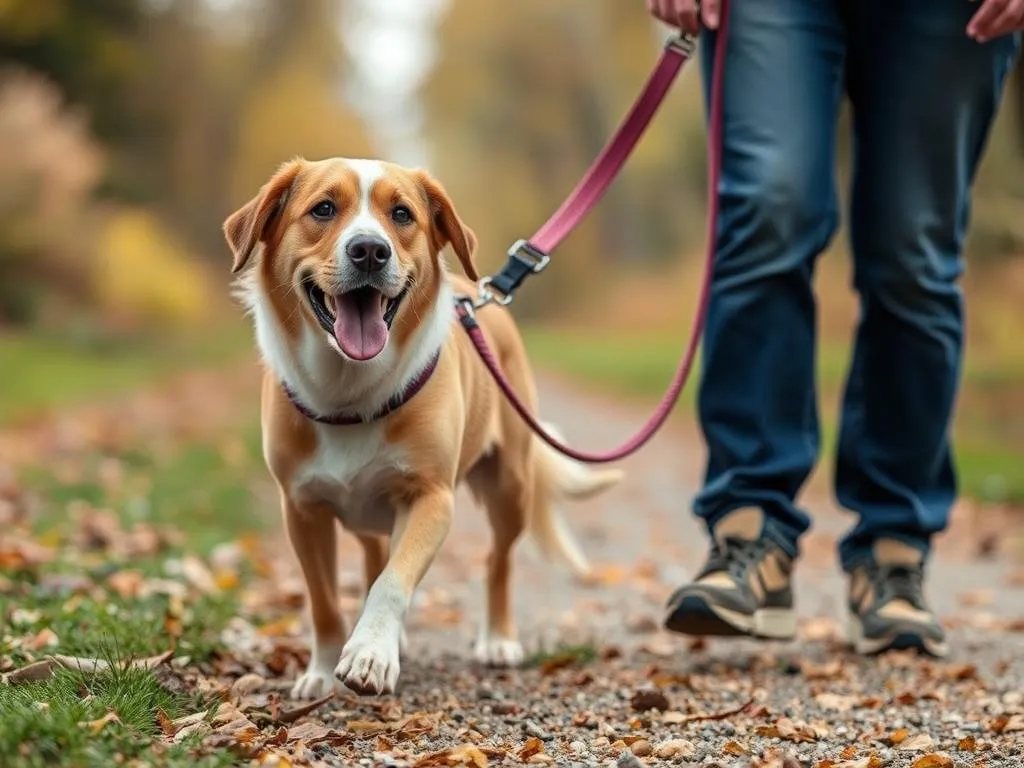
Leash training is an essential skill for every dog owner, creating a safe and enjoyable walking experience for both the dog and the owner. Many dog owners encounter challenges during this process, whether it’s a dog that pulls excessively, becomes easily distracted, or shows signs of anxiety. This guide aims to provide a comprehensive roadmap on how to train a dog to walk on a leash, helping you navigate these obstacles effectively.
Understanding the Basics of Leash Training
Why Leash Training is Important
Training your dog to walk on a leash is not just about following the rules; it’s about ensuring the safety of both you and your furry friend. A well-trained dog is less likely to dash into traffic or become a nuisance to other pedestrians. Moreover, leash training promotes good behavior in public spaces, reducing the likelihood of unwanted incidents. Importantly, the process of leash training strengthens the bond between you and your dog, as it encourages communication and mutual understanding.
Types of Leashes and Collars
When starting your leash training journey, understanding the tools at your disposal is crucial. Here are the different types of leashes you might consider:
- Standard Leash: Typically made from nylon or leather, these leashes offer better control and are ideal for training.
- Retractable Leash: Provides more freedom for your dog but can encourage pulling if not used properly.
- Training Leash: Often longer than standard leashes, these are great for recall training but can be cumbersome in crowded areas.
In terms of collars, here are a few options:
- Flat Collar: The most common type, suitable for everyday use.
- Harness: Great for dogs that pull, as it distributes pressure across the body.
- Head Collar: Designed to gently guide the dog’s head, making it easier to control their movement.
When choosing gear for leash training, consider your dog’s size, breed, and behavior. A snug fit is essential, but never too tight to cause discomfort.
Preparing for Leash Training
Assessing Your Dog’s Readiness
Before diving into leash training, it’s important to assess your dog’s readiness. Consider their age and developmental stage. Puppies as young as eight weeks can begin to get accustomed to a leash, while older dogs may require more time to adjust. Behavioral traits such as previous experiences with walking or any past traumas involving a leash should be taken into account.
Setting the Right Environment
The environment plays a significant role in successful leash training. Start in a quiet space, free from distractions, where your dog can focus entirely on you. This could be your backyard or a quiet park. Minimizing distractions will help your dog learn without the overwhelming stimuli of busy streets or other animals.
Essential Training Tools
Having the right training tools can make a significant difference. Here are some essentials:
- Treats: Choose small, soft treats that are easy for your dog to chew quickly.
- Clicker: If you plan to use clicker training, ensure you have one handy for marking good behavior.
- Toys: A favorite toy can serve as an additional reward or a distraction during training.
Step-by-Step Guide to Leash Training
Introducing the Leash
Begin by letting your dog see and sniff the leash and collar. Allow them to explore these new items at their own pace. Once they’re comfortable, gently put the collar on and attach the leash. Use positive reinforcement techniques, such as treats and praise, to create a positive association with the leash.
Basic Commands
Teaching essential commands like sit, stay, and heel is crucial for effective leash training. Start with basic commands in a distraction-free environment. For example, teach “sit” before you walk. Once your dog has mastered these commands, they’ll be more responsive during walks.
Practicing Walking
Start the walking practice indoors with short sessions. Allow your dog to walk freely beside you while you hold the leash. Gradually transition to outdoor environments. Use treats to encourage your dog to walk beside you, rewarding them for maintaining the correct pace and direction.
Handling Pulling and Distractions
Pulling can be one of the most frustrating aspects of leash training. When your dog pulls, stop walking immediately. Wait until they return to your side before continuing. This teaches them that pulling does not lead to progress. Additionally, if your dog becomes distracted, use treats or a toy to redirect their attention back to you.
Advanced Leash Training Techniques
Loose Leash Walking
Loose leash walking is a desired skill that allows the dog to walk beside you without tension in the leash. To achieve this, follow these steps:
- Start walking with a loose leash.
- Reward your dog for staying beside you.
- If they pull, stop and wait for them to return to your side.
- Continue rewarding them for maintaining the loose leash.
Walking in Different Environments
As your dog becomes more comfortable with leash walking, introduce them to different environments. Start with quieter areas and gradually expose them to crowded places, parks, and urban settings. This gradual exposure helps your dog adapt to various stimuli and reinforces calm behavior.
Socialization While Leash Training
Socialization is an integral part of leash training. Introduce your dog to other dogs and people while on walks. Positive interactions will help your dog feel more secure and confident in social settings. Always reward calm behavior when encountering new stimuli.
Common Challenges and Solutions
Dealing with Fear or Anxiety
Recognizing signs of fear or anxiety in dogs is crucial. If your dog exhibits fear while on a leash, such as cowering, barking, or trying to escape, take a step back. Use counter-conditioning techniques, like desensitization to the leash and gradual exposure to different environments, to help them feel more comfortable.
Addressing Aggressive Behavior
If your dog shows aggressive behavior while on a leash, identify the triggers. This may include other dogs, people, or loud noises. Management techniques, such as changing direction, rewarding calm behavior, or using a head collar, can help. If aggression persists, consider seeking professional help from a certified dog trainer.
Maintaining Consistency
Consistency is key in leash training. Regular practice reinforces skills and helps your dog remember what you expect from them. Keep training sessions engaging and fun to maintain your dog’s interest. Aim for short, frequent sessions rather than long, tedious ones.
Maintaining Good Leash Manners
Reinforcement and Rewards
Using treats and praise effectively can reinforce good behavior during walks. Timing is crucial; reward your dog immediately when they exhibit the desired behavior, such as walking beside you or ignoring distractions. Gradually decrease the frequency of treats as your dog becomes more reliable.
Regular Training Refreshers
Ongoing training sessions are essential to maintain leash walking skills. Schedule regular refreshers, especially if you notice any regression in behavior. Aim for short sessions of 5-10 minutes, focusing on reinforcing previously learned skills.
Conclusion
Leash training is an invaluable skill that enhances the bond between you and your dog while ensuring safety during walks. By practicing patience and consistency, you can overcome the challenges of leash training and enjoy peaceful walks together. Remember, the journey of training is just as important as the destination, and each walk is an opportunity to build a stronger relationship with your furry companion. Enjoy the process, and happy walking!









